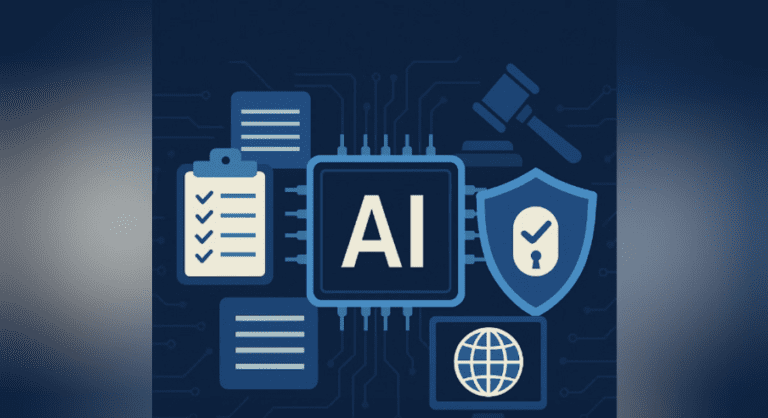Compliance-First AI: Building Secure and Ethical Models in a Shifting Threat Landscape


Sam Peters, the Chief Product Officer at ISMS.online, explains how brands can build secure, ethical, and compliance-first AI models in today’s evolving threat landscape. This article originally appeared in Insight Jam, an enterprise IT community that enables human conversation on AI.
 As artificial intelligence becomes increasingly embedded in business operations, from customer service and inventory management to document automation and decision support, one thing is clear: AI is a critical asset, not a novelty. But as technology matures, so does its exposure to risk. And if organizations want to realize the full promise of AI without opening the door to adversarial attacks, they must start with one essential building block: compliance.
As artificial intelligence becomes increasingly embedded in business operations, from customer service and inventory management to document automation and decision support, one thing is clear: AI is a critical asset, not a novelty. But as technology matures, so does its exposure to risk. And if organizations want to realize the full promise of AI without opening the door to adversarial attacks, they must start with one essential building block: compliance.
Compliance First: The Foundation for Secure and Ethical AI
Before deploying models, before layering on analytics, and long before marketing AI as a competitive differentiator, organizations must embed governance and security at the core of their AI initiatives. That’s where internationally recognized frameworks like ISO/IEC 42001 and ISO/IEC 27001 come in.
ISO 42001 provides a blueprint for responsible AI development. It helps organizations identify model-specific risks, implement proper controls, and govern AI systems ethically and transparently. It’s not just about protecting data, it’s about aligning AI with organizational values and societal expectations.
ISO 27001, meanwhile, offers a comprehensive approach to managing information security risks. It provides controls for safeguarding the infrastructure AI depends on: secure data storage, encryption, access controls, and incident response. Together, these two standards equip businesses to protect their AI systems and demonstrate diligence in a rapidly evolving legal and regulatory environment.
Navigating a Fragmented Regulatory Landscape
U.S. federal lawmakers have yet to pass a comprehensive AI regulation. For now, oversight is happening at the state and local levels, resulting in a patchwork of rules and requirements. With the AI mandate removed from The One Big Beautiful Bill, Congress has effectively left AI governance to individual jurisdictions for now.
For multi-state or national businesses, this decentralized approach creates compliance complexity and regulatory uncertainty. Companies can get ahead of domestic variability and future global mandates by aligning with international frameworks like ISO 42001 and ISO 27001.
Consider the EU’s recently adopted Artificial Intelligence Act, which categorizes AI systems by risk and sets strict requirements for high-risk applications. Similarly, the UK has signaled its intent to regulate the most powerful AI models. For U.S. companies operating globally or simply preparing for what’s next, proactive compliance isn’t just prudent. It’s essential.
The Expanding Attack Surface: How AI is Being Exploited
Even as AI enhances productivity and efficiency, it’s becoming a new target for cyber-criminals. Threat actors are no longer just using AI but attacking it directly.
Common adversarial techniques include:
- Data poisoning, where attackers manipulate training data to corrupt outputs or embed bias.
- Model inversion, which allows threat actors to reconstruct sensitive training data.
- Trojan attacks implant hidden behaviors into models that activate under specific conditions.
- Model theft, enabling competitors to reverse-engineer proprietary algorithms.
- Output manipulation, particularly risky for content-generating systems, can be forced to produce offensive or misleading content.
The implications go beyond technical failure. Attacks on AI can erode public trust, introduce legal liabilities, and cause real-world harm. That’s why security must be included from the start, not retrofitted once a breach occurs.
AI’s Double-Edged Role in Cybersecurity
Ironically, AI is both part of the solution and part of the problem. Security teams increasingly rely on AI to automate threat detection, triage incidents, and surface anomalies. But bad actors are doing the same.
AI enables cyber-criminals to scale attacks with greater speed and sophistication, whether through deepfake social engineering, generative phishing, or malware obfuscation. It’s creating a new arms race that is already underway. The best defense is a clear governance framework that outlines not only how AI is deployed, but how it’s monitored, tested, and updated to withstand both known and novel attack vectors.
Training the Whole Business: Compliance is Cultural
A successful security strategy can’t live in the SOC alone. It requires cultural buy-in across the organization, and that starts with training. As AI introduces new ethical and technical challenges, security awareness programs must evolve. Yes, employees still need to spot phishing attempts and protect passwords, but they also need to understand AI-specific risks, like hallucinations, bias amplification, and synthetic media threats.
Training should also address ethical use: how to detect and report unfair outcomes, escalate questionable outputs, and stay aligned with the organization’s risk posture. In short, a compliance-first mindset must permeate every level of the business.
A Security Strategy That Starts with Compliance
For enterprises racing to adopt AI, the path forward may seem complex. And it is. But establishing a strong compliance foundation is a clear starting point. To do so means implementing internationally recognized standards, staying current with emerging regulations, and educating teams on new risks and responsibilities.
The alternative, delaying governance until after deployment, invites operational inefficiency, reputational damage, and legal risk. In a fragmented regulatory environment, proactive compliance is more than a box to check. It’s a shield, a signal of trust, and a competitive advantage.
Businesses that treat compliance as core infrastructure, not an afterthought, will be the ones best equipped to innovate responsibly and defend decisively in the age of intelligent systems.


















